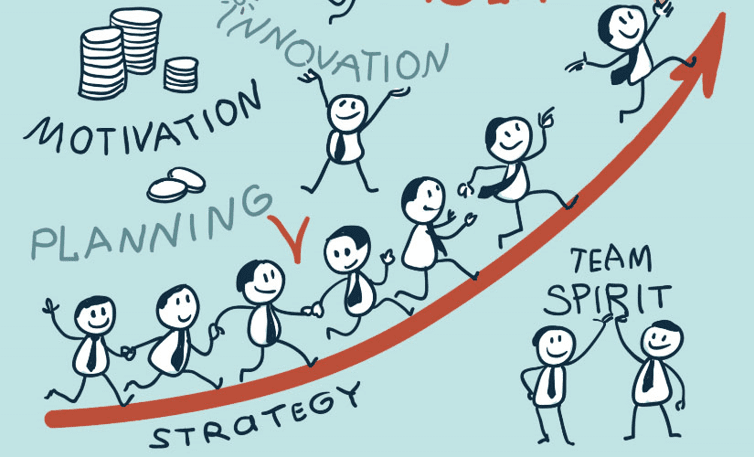The global pandemic accelerated the shift to remote work for many organizations, including those that had never considered remote work an option for their employees. Managers and HR staff scrambled to determine how they should measure performance in an environment where they could no longer “see” how people were doing their work. As the United States starts to open back up, organizations are talking about employees returning to the office. Numerous surveys indicate that many employees do not want to return to the office full time. Many prefer hybrid work where they have the option to work remote at least a few days each week. This paradigm has caused organizations to rethink their definition of work and consider how to fairly measure employee performance.
The Shift to Remote Work

The shift to remote work was abrupt. One day people were working in the office and a week later many had been sent home with a computer. This was a dramatic change for organizations. There were both benefits and challenges for employees and organizations as they learned to adapt to the new normal.
The Benefits
The biggest benefit for remote employees was the reduced risk of illness. Staying home prevented exposure to germs in the office. It also eliminated commute time which led to reduced costs for gas and parking. Employees benefitted from gaining back their commute time. They used their time to deliver more work and spend quality time with their families.
Organizations benefitted from increased employee productivity and reduced in-office costs. The goodwill organizations received from keeping people safe by sending them home brought greater feelings of satisfaction from employees. This led to lower turnover.
The Challenges
But every upside has a downside. Some employees experienced greater challenges working remotely. Especially parents who had the added pressure of dealing with lack of childcare, in-person school, and summer camps. Parents were also responsible for helping children with online school. With longer hours and fewer breaks, and the lack of physical distance between work and home, some workers were dealing with burnout on top of the stress of being with their family all the time.
There were professional impacts to working remotely, too. Lower-tenured employees lost formal and informal networking opportunities with leaders and managers. With no in-office contact, they were unable to spend time chatting in the breakroom or sharing ideas while walking out of a meeting. They also had to find creative ways to build relationships with colleagues and peers.
Even with all of the downsides, many workers have expressed that they are not excited about returning to their pre-pandemic offices. In a Harvard Business School survey, 81 percent of workers indicated they wanted to either stay remote or move to a hybrid work schedule, alternating remote and in-office workdays.
Recruiters are indicating that the number one most sought-after benefit for a new job right now is the ability to work remotely. Many employees are indicating they would take a pay cut to continue working remotely. And many more organizations are offering remote work than ever before.
Best Practices for Managing Hybrid Teams

To retain employees, organizations need to find the right balance of hybrid work for the organization and its workers. Several surveys indicate a balance of 2-3 days in the office and 2-3 days remote is the most popular option. Organizations also need to identify how best to manage performance on hybrid teams.
Best practices for managing hybrid teams include 1) creating psychological safety, 2) developing awareness of potential bias toward remote workers, and 3) evaluating performance fairly, independent of work location. While these practices sound like what many managers have been doing all along, there are specific factors to consider to be effective at managing a hybrid team.
Psychological Safety
A recent Harvard Business Review article describes the importance of psychological safety in a hybrid workplace. Traditional psychological safety is about creating a team environment where it’s safe for employees to share their thoughts without fear of ridicule. In a hybrid environment, managers must make it comfortable for employees to share things they have not traditionally shared at work that may impact their ability to accomplish goals, such as health situations, health-risk comfort level, family situations, etc. Just asking employees to “trust us” with their information isn’t enough. Managers must do more to build that trust.
Unconscious Bias
Unconscious bias may come into play based on where someone chooses to work. During the pandemic, with fewer face-to-face interactions and chances to build relationships, managers may have been quicker to judge employees less favorably, especially those they didn’t know very well or couldn’t see.
Research shows that those who are in the office have a distinct advantage over those who are remote. In-office workers get more face time with leaders, opportunities for mentorship, and tend to have higher promotion rates and bonuses because remote workers are “out of sight, out of mind” and receive fewer opportunities. Being aware of potential bias can help managers make a conscious effort to challenge their assumptions about who is capable of completing a task when assigning projects and evaluating performance.
Evaluate Performance Fairly
No manager sets out to unfairly measure performance. It’s important to keep a few things in mind that will help level the playing field. In “How to Conduct Performance Reviews for Remote and Hybrid Teams” , they list several factors for fairly measuring performance.
These factors are:
- Understanding the imbalance between in-office and remote workers.
- Giving credit where it is due so that everyone receives recognition for their work.
- Educating everyone about remote workers to establish team communication norms.
Going Forward

The transition to home was unexpected and abrupt. Many people are just starting to feel that it’s safe to rejoin society again. Over the past year, organizations did a good job of supporting their employees as they dealt with all sorts of new issues. Issues including illness, home schooling, spotty internet, and learning Zoom. As we transition into our next new normal of hybrid work, organizations can continue to support employees. Take what we’ve learned this past year about work being something we do, not necessarily a place we go. Ensure that we’re providing opportunities to develop everyone and measuring performance fairly based on the work that’s being done, not penalizing workers for where it’s being done.
The Wrap

Listen to Suzanne Ritchie explain more about the new hybrid work world and managing employee performance on May 19th at 1pm. Register Here.

The AdvoCAT Series strives to be your HR advocate.
For more information regarding our HR Services please visit https://theolsongroup.com/hr-consulting/

